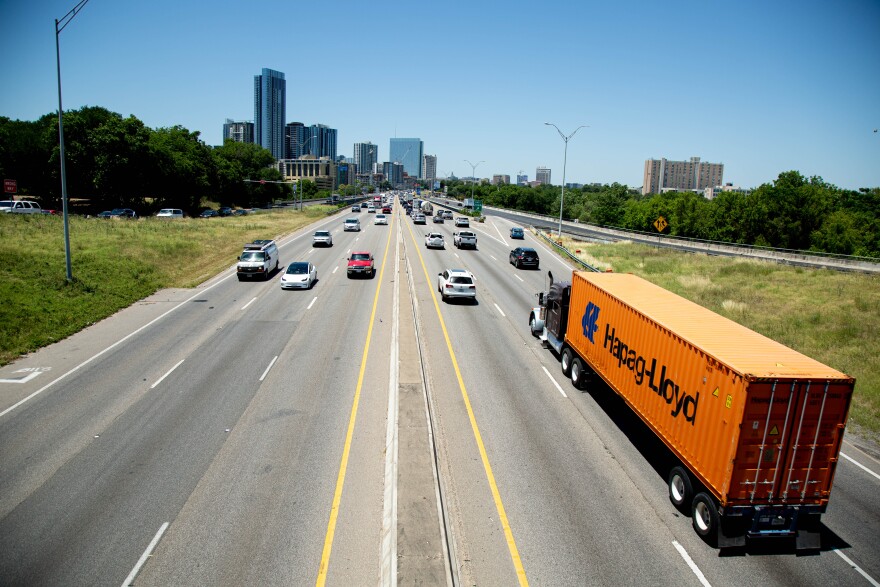The Texas Department of Transportation (TxDOT) has released the most detailed description yet of plans to widen I-35 through the core of Austin — explaining how the agency believes its multibillion-dollar highway expansion could affect everything from parks to pollution.
As part of a more-than-7,000 page draft environmental impact statement — required under federal law and released over the holidays — TxDOT revealed which of two competing highway designs it prefers for the multibillion-dollar expansion from Ben White Boulevard to U.S. 290 East.

The winning design, known as "Modified Build Alternative 3" in clunky government parlance, is similar to the rival proposal but was altered in early 2022 partly in an attempt to appease community critics of the original design.
Both proposals would add two high-occupancy vehicle lanes in each direction from Ben White to 290. Both would sink the main lanes below ground level for most of the distance from Oltorf Street to Airport Boulevard, leaving them largely uncovered except for a chunk or two of blocks downtown. And both would force dozens of people from their homes and businesses as the highway's footprint is enlarged to envelop more land.
TxDOT's preferred design would result in less land seized and fewer people pushed out than the competing proposal, but it would still expropriate almost 42 acres and displace 107 homes and businesses. Unlike the losing design, TxDOT's preferred plan avoids demolishing a 70-unit affordable housing complex that opened only four years ago.
As part of the draft environmental statement, TxDOT made public for the first time a list of properties that could be demolished along with a brief analysis of how many jobs could be lost if those businesses don't relocate.
Modified Build Alternative 3 would also shift both frontage roads to the east side of the interstate between Dean Keeton Street and 15th Street and then to the west side of the highway from 15th Street to Cesar Chavez.
Side-by-side frontage roads would create "boulevard sections," TxDOT says, that could run next to city-funded decks covering the lowered highway from Cesar Chavez to Eighth Street.

TxDOT is in talks with the University of Texas about the possibility of UT paying to cover I-35 next to campus. The upper decks, which opened in 1975, are slated for demolition.
Modified Build Alternative 3 adds something called a single-point urban interchange (SPUI) at I-35 and Riverside Drive. A SPUI (pronounced SPOO-ee) allows all left-hand turns to be controlled by a single traffic signal. The configuration means more vehicles can move through an intersection, but it also requires more space.

TxDOT says the configuration will be able to accommodate the Blue Line, a light-rail route planned to run from Austin-Bergstrom International Airport, down Riverside Drive past I-35 and over Lady Bird Lake into downtown Austin.
The preferred expansion includes a pedestrian- and bicycle-only bridge at Woodland Avenue, but — unlike the competing plan — excludes direct connectors between I-35 and U.S. 290 East.

TxDOT is accepting public comments on the draft environmental impact statement from now until March 7.
After the public comment hearing ends, TxDOT has to consider and respond to each comment and make a final decision about the road design. That final environmental impact statement is expected this summer. Construction is slated to start in late 2025.















